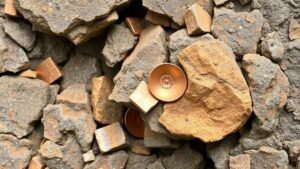How to Collect and Test Dry Sediment Samples for Gold in the Field
How to Collect and Test Dry Sediment Samples for Gold in the Field
Gold prospecting is an exciting venture that combines outdoor exploration with the potential for financial gain. Collecting and testing dry sediment samples in the field is a critical step for those looking to determine the presence of gold. This article outlines the methods and best practices for effective sampling and testing.
The Importance of Proper Sample Collection
Effective sampling is fundamental to accurately assessing the presence of gold in sediment. Poor collection methods can lead to inaccurate results, potentially costing time and resources.
- Representative Sampling: It is crucial to collect samples from various locations to ensure a comprehensive understanding of the area.
- Contamination Prevention: To avoid contamination, tools and containers should be clean and designed specifically for sampling.
Tools and Equipment Needed
Collecting dry sediment samples efficiently requires specific tools and equipment. Essential items include:
- Sample Bags: Use resealable plastic bags or glass containers to store samples without the risk of contamination.
- Shovel and Scoop: A hand shovel or scoop will help extract sediment from the ground.
- Gold Pan: While more often used in water, a gold pan can aid in quickly assessing sediment quality on-site.
- Field Notebook: To record notes about the sampling location, sediment characteristics, and observations.
Steps for Collecting Dry Sediment Samples
Follow these steps to ensure effective sample collection:
- Select Locations: Identify zones with potential for gold deposits, such as riverbanks and ancient stream beds.
- Dig and Collect: Use a shovel to dig into the sediment at a consistent depth (ideally around 6-12 inches) and collect a sample.
- Mix Samples: If taking multiple samples, mix them in a larger container to create a composite sample that is representative of the area.
- Transfer to Storage: Place the sediment into clean sample bags or containers, noting the location and depth of sampling.
Testing Dry Sediment Samples for Gold
Once collected, testing dry sediment samples in the field can provide immediate insights into gold presence.
Visual Inspection
Start with a visual inspection of the sediment:
- Look for fine gold flakes or colors within the sediment.
- Identify any heavy minerals that may indicate a gold deposit.
Using a Gold Pan
The gold panning method allows for a more thorough examination of sediment:
- Fill the Pan: Add the dry sediment sample to the pan.
- Wet the Sample: Lightly sprinkle the sample with water to enhance separation.
- Swirl the Pan: Gently swirl to allow heavier materials, such as gold, to settle at the bottom.
- Review Residue: Slowly wash off the lighter materials and observe the residue for gold flakes.
Interpreting Results
Interpreting the results from field tests is crucial for assessing viability:
- Presence of Gold: Even small amounts may indicate potential for larger deposits.
- Geological Context: Understanding the geology of the area can amplify interpretations of sample results.
Conclusion and Actionable Takeaways
Collecting and testing dry sediment samples for gold in the field is a systematic process that requires diligence and attention to detail. By following the outlined steps, utilizing appropriate tools, and interpreting results accurately, prospective gold miners can enhance their chances of success.
Here are some actionable takeaways:
- Conduct thorough site research before sampling to identify the best locations.
- Use multiple sampling methods to obtain a comprehensive view of the area.
- Document all findings meticulously to aid in future evaluation and testing.
By adhering to these principles, individuals can effectively navigate the challenges of gold prospecting and increase their likelihood of uncovering valuable resources.


